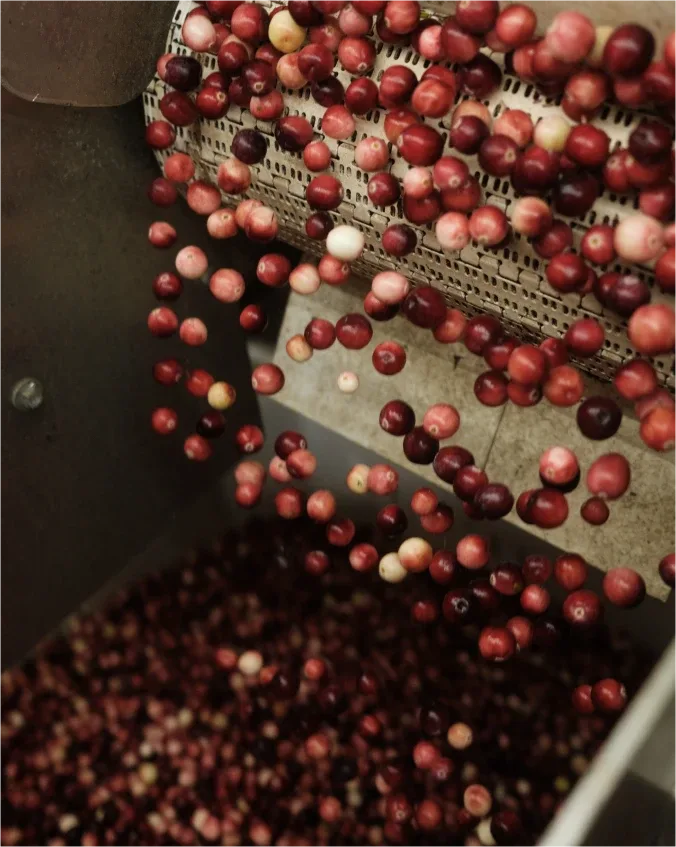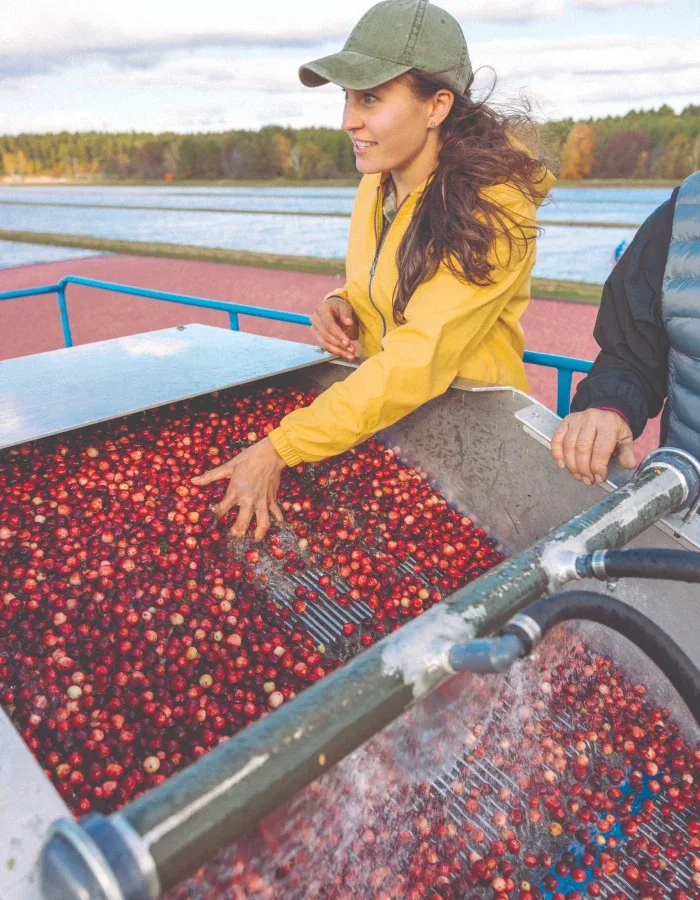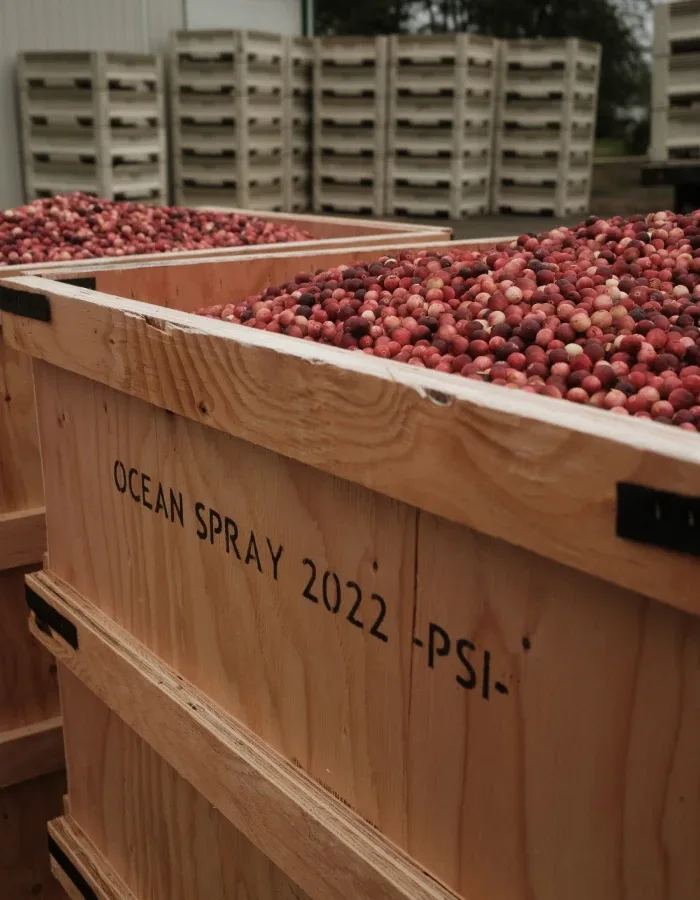page
the-harvest
en-US
The Harvest | Our Farmers
Every autumn cranberries reach their peak of color and flavor and are ready for harvesting. That's when our growers harvest millions of pounds of cranberries.
Fall Is Harvest Season
Every autumn (usually from mid-September until around mid-November in North America and March through May in Chile), cranberries reach their peak of color and flavor and are ready for harvesting. That's when our growers harvest millions of pounds of cranberries. If you ask us, it's really quite beautiful.
Wet Harvest
A lot of people think that cranberries grow under water. Makes sense, since we usually see the berries floating on top of the water. But, what we’re seeing is actually the result of wet harvesting. The bog is flooded with up to 18 inches of water the night before the berries are to be harvested.
The growers then use unique harvesting machines to churn the water and loosen the cranberries from the vine. Each berry has tiny pockets of air that allow it to float to the surface of the water.
From there, they’re corralled together, loaded into trucks, and shipped off to become the Ocean Spray® products that fill your grocery aisles.
Fresh Cranberries
Fresh cranberries, the ones you buy in the produce aisle every fall, are harvested through one of two ways. Either dry picked or water harvested by gently combing the berries off the vines and drying them to make sure they are the highest quality fruit.
#oceansprayharvest
Here’s a sneak peek straight from the bog of the magic behind the most beautiful harvest – Ocean Spray’s cranberry harvest. Tag @OceanSprayInc for your content to be featured!
Join Cran Nation

